Huawei MateBook X Pro (2021) Review: A Sleek and Vibrant Notebook
by Dr. Ian Cutress on September 28, 2021 9:00 AM EST- Posted in
- Notebooks
- Intel
- Huawei
- Laptops
- Matebook X Pro
- Tiger Lake
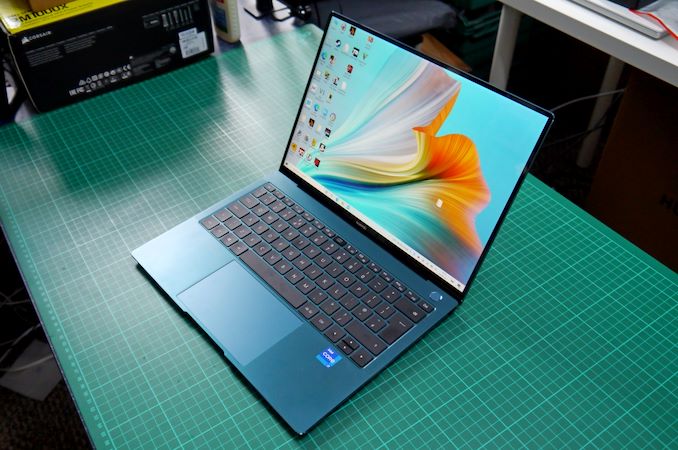
As a laptop vendor, Huawei is entering its fourth year. Relying on x86 silicon and a GPU here and there, one thing Huawei does well is the quality of the design. The company has transferred the knowhow developed over a decade of smartphones into something bigger, with a keyboard, running Windows. The latest MateBook X Pro 2021 edition we’re testing today equips an Intel 11th Gen Core i7 with one of the physically largest displays you can fit into a 14-inch device, and a brushed aluminium chassis that’s very smooth to the touch and an Emerald Green finish that really stands out.
Huawei Makes Laptops? Really?
Over the years that we have covered Huawei products, through the good and the bad, through the first attempts and halo devices, a main feature that’s hard to ignore is the design. After a decade of Huawei smartphones, we were introduced to the first 2-in-1 laptop products in 2017, and although well designed and comforting to handle, the user experience needed some work. But it wasn’t long before we got a Windows device that looked great with an experience to rival market veterans.
Enter the first generation MateBook 13, and it is easily one of the best laptops I’ve used as a 6-month travel work machine to date. Unfortunately due to some improvements Huawei wanted to introduce (like the recessed webcam, more on that later), the company quickly replaced it with a less inspiring configuration that wasn’t as well received. Huawei has traditionally gone with Intel in its systems, but was one of the first to partner with AMD when the AMD Mobile Ryzen became available – we saw Ryzen versions of its education model, albeit for China only.
Huawei’s laptop ambitions right now are in three main categories
- Education with the MateBook D 14, MateBook D 15, and MateBook D 16
- Portable with the MateBook 13, MateBook 14, and MateBook 16
- Professional with the MateBook X (13-inch) and MateBook X Pro (13.9-inch).
Those last two categories being aimed squarely at the traditional MacBook markets.
Today we’re testing the Huawei MateBook X Pro 2021 model, which features an Intel 11th Generation Tiger Lake Core i7 processor and uses integrated graphics, paired with 16 GB of LPDDR4X memory and a 512 GB NVMe SSD. Normally people might associate a Pro laptop with a discrete GPU included - in the 2020 model, Huawei used a 10th Gen processor with an NVIDIA MX250 discrete GPU, but that has been dropped in favour of Intel’s integrated Xe Graphics.
Huawei MateBook X Pro 2021: Hands On
When you first take a new laptop out of the box, after picking it apart from the Styrofoam and removing the protective plastic wrapping, you touch the chassis. For most devices, this is a mundane affair, as you’re touching plastic or something equally utilitarian. Higher cost devices will have an aluminium unibody, saving weight, or if you’re going for something even lighter, an expensive lithium-magnesium alloy can be an option. However, even with a metallic unibody design, not all are equal, and it comes down to how that chassis is treated, etched or finished, and treated as part of the design. With this MateBook, it has that touch that is very smooth but if you softly move your hand over it, you get a small vibration sensation. In my mind, it’s great. I’ve asked people if they feel the same thing. They have no idea what I’m going on about.
Opening the lid, we see a chiclet-style keyboard with a massive touchpad and a separate power button in the top right corner. In its MateBook designs, Huawei integrates the same high-speed Goodix fingerprint recognition sensor into the power button as it does with its smartphones, which has grown to be one of the easiest to use in the market with a fast response and near-perfect recognition.
The fact that this power button is a separate button entirely on the keyboard should not be understated. I loathe the in-keyboard power buttons that are often to the right of the delete key, as they get pressed way too often by accident. I also loathe designs with the power button on the side, because invariably when trying to move a laptop closer to see better, that button will always get pushed. Huawei has it in the correct position here, and it also comes with a small click to know when it’s pressed. You don’t need to click it to get the fingerprint sensor to work, which is a bonus.
The large touchpad is Huawei’s latest iteration, and having had some dodgy trackpads in the past, this one works well and is easy to use with a good palm rejection and a slight click on both the left and right for the respective mouse button presses. Gestures sometimes took a couple of tries to activate, but no more so than most other premium touchpads I’ve tested. The touchpad doesn’t have the same feel as the chassis that I mention above, which is perhaps a good thing – I found it very easy to be accurate with mouse movements with the touchpad too.
They keyboard uses a slight bevel on each key to make it easier to hone in on the chiclet style, however the half-size up/down arrows aren’t always fun to play with. As with most laptops, there is a second function for the top row of F keys, and the Huawei design allows the user to operate with the Fn/Function key permanently on or off, and selecting between the two is just a simple press. On other laptops I’ve noticed that sometimes requires a BIOS option change, so the fact that this is on the keyboard helps. Every key is white backlit as well. Perhaps the oddest different to most laptops is where the camera sits.
Since 2018, Huawei has decided to remove the built-in webcam from the chassis lid. We normally find it above the display, but that either compromises the look of the display, or you end up with a really bad and tiny camera. Some vendors remove it entirely, but Huawei has relocated it to the Function key row. It sits just below the key between F6 and F7, and which you click it, it springs up from its spot and points up at you.
This fulfils the tick on the spreadsheet of having a built-in camera. However, the camera isn’t great: the quality is still a standard 720p camera that you would find in the chassis lid on other laptops, except this one points right up at your chin. And up your nose. I don’t know about you, but having to have critical meetings while looking up at someone’s nose hair isn’t the greatest experience. Usually I recommend that if you are going to have a video call with a laptop web-cam embedded in the display, then put the laptop up on some books, so at least the camera is at eye-level rather than looking up. The Huawei solution does the reverse, and makes it a poor experience for all concerned. I would suggest looking at external cameras here.
But the benefit of removing the webcam from the chassis is that Huawei has fitted one of the biggest 14-inch class displays to a 13.9-inch notebook. Huawei lists the screen-to-body ratio as 91%, and the LTPS display has a 3000x2000 resolution in a 3:2 aspect ratio, giving it 260 pixels per inch. The official specifications for the display rate it as at 450 nits brightness, with a 1500:1 contrast ratio with 100% sRGB gamut. The display also supports 10-point multi-touch – we’ll go more into verifying these claims during our display testing later in the review. But as with many devices that look great when the screen is right up against the display, it’s hard not to be astounded by how much display real estate there is here.
For connectivity, on the left the MateBook X Pro 2021 has a 3.5mm audio jack and two USB Type-C ports (support for dual 4K60 display, 50W charging, or data). On the right is a single USB 3.2 Type-A port. Inside is a Wi-Fi 6 controller with BT5.1 support, as well as a Huawei Share NFC module. Users with a Huawei smartphone that supports Huawei Share can dock it to the laptop wirelessly to share the displays with each other, use the phone as a remote control, use the laptop to take and make calls, or an easy way to share pictures and videos in either direction.
| Huawei Matebook X Pro Specifications | |||||
| AnandTech | 2018 | 2019 | 2020 | 2021 | |
| Processor | CPU | i7-8550U | i7-8565U | i7-10510U | i7-1165G7 |
| Cores | 4C + HT | 4C + HT | 4C + HT | 4C + HT | |
| TDP | 15 W | 15 W | 15 W | 15 W | |
| Base Freq | 1.8 GHz | 1.8 GHz | 1.8 GHz | 1.7 GHz | |
| Turbo Freq | 4.0 GHz | 4.6 GHz | 4.9 GHz | 4.7 GHz | |
| L3 | 8 MB | 8 MB | 8 MB | 12 MB | |
| uArch | Kaby | Whiskey | Comet | Tiger | |
| Graphics | NVIDIA MX150 2GB GDDR5 |
NVIDIA MX250 2 GB GDDR5 |
Xe-LP 96 EUs |
||
| Display | 13.9-inch, 3000x2000 100% sRGB, LTPS Panel 450 nits. 1500:1 contrast 10-point touch |
||||
| DRAM | 16GB LPDDR3 |
16GB LPDDR3 |
16GB LPDDR3 | 16GB LPDDR4X | |
| Storage | 512 GB NVMe PCIe 3.0 x4 |
512 GB NVMe PCIe 3.0 x4 |
512 GB NVMe PCIe 3.0 x4 |
1 TB NVMe PCIe 3.0 x4 |
|
| Wireless | Wi-Fi 5 | Wi-Fi 5 | Wi-Fi 5 | Wi-Fi 6 | |
| Camera | Spring Latch, 1MP | ||||
| Battery | 57.4 Wh | 57.4 Wh | 56 Wh | 56 Wh | |
| Weight | 1.33 kg | 1.33 kg | 1.33 kg | 1.33 kg | |
| Price | ¬$1800 | ~$1810 | ~$1900 | ~$1500 | |
Inside our model is the Intel Core i7-1165G7, the entry level Core i7 but with the biggest Xe graphics option, which is paired with 16 GB of LPDDR4X-4266 and a 1 TB Samsung PM981a NVMe SSD. The 56 Wh battery is rated for 10 hours of local video playback, which we’ve tested later in the review. At 1.33 kg (2.9 lbs), the metal unibody design does make it light for its 13.9-inch laptop size. Alongside the Emerald Green color of our unit, Huawei also offers a Space Grey. Our device shipped with Windows 10 Home, however a free upgrade to Windows 11 will be rolled out in due course.
Other features of the notebook include a dual Shark Fin fan design inside the chassis, so even without a discrete GPU, the cooling is sufficient and designed to be quiet. There is also a quad-speaker design, as well as two front facing microphones.
Over the next few pages, we’ll cover the performance, display, battery life, charging, and other aspects of the system.


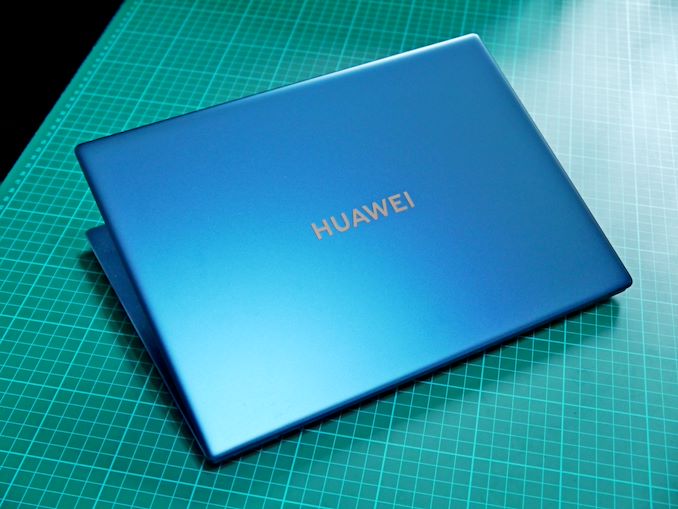


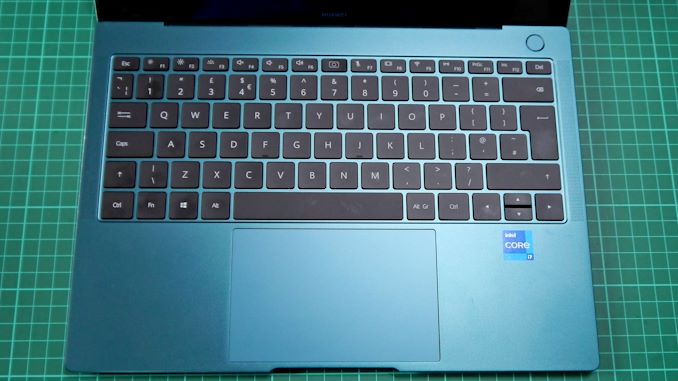
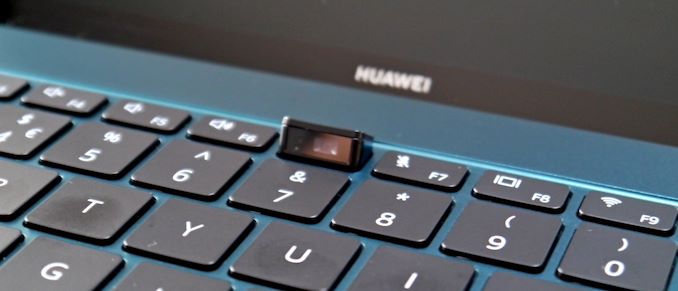
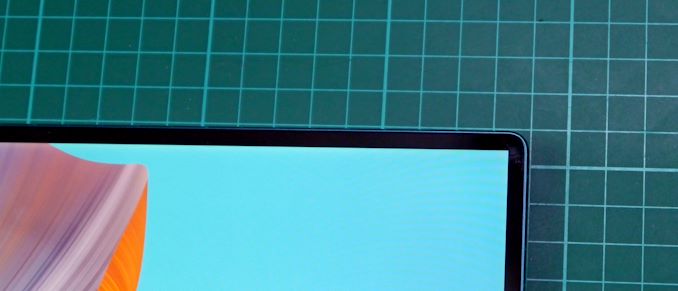











84 Comments
View All Comments
gijames1225 - Tuesday, September 28, 2021 - link
According to Stack Overflow data, 44% of developers use Windows (or WSL), 30% Mac, and 25% use Linux (rounding and the BSD folks account for that missing 1%). Yeah, that's no horrible representation, but shows that LinkedIn recruiting photos of everything getting a MacBook aren't indicative of the industry (that said front-end developers do, in the States at least, use Macs by a slight majority, but then again, those guys write JavaScript so there's no telling what motivates them).Now, we'll have to see
gijames1225 - Tuesday, September 28, 2021 - link
In the US it is a bit more common to be a developer and use a Mac, but it's still the minority platform by far, and in Europe and elsewhere it's very, very uncommon. Also, the couple of developers I work with who do use Macs don't use MacBook Airs, they use MacBook Pros. I've never encountered anyone in comp-sci besides budget constricted students who use MBAs.I'd also agree with TheinsanegamerN that now that Windows has WSL in good shape I'd be surprised if Macs don't eventually become solely Swift compilers over the next decade. Apple's whole attitude is around how to lock-in, control, and monetize developers rather than empower them, and that's just so night and day different than any other tech company / platform I've had to work with besides Oracle (at least since Microsoft came to Jesus under Nadella is open-sourcing and cross-platforming everything they get their hands on).
vladx - Wednesday, September 29, 2021 - link
" you appear to be forgetting about programmers."I'm a programmer and would never buy a MacOS device, there's a world outside US you know.
jospoortvliet - Tuesday, September 28, 2021 - link
Hum. Odd. Every designer including our video guy use a MacBook air m1 in our company as do several developers. Some have a m1 pro but it offers little extra. Most of the rest use Linux. But then, we don't have an ignorant it department telling ppl what to use, they can pick what they want.dontlistentome - Wednesday, September 29, 2021 - link
How do they manage with just 16GB and a single external screen?SaolDan - Wednesday, September 29, 2021 - link
Where i work the owner is a hard core apple guy so all cad, office ppl use apple. Field Programmers, technicians and installers use windows. All the software we use is for windows. There's one manufacturer that states "if you have MacOS good luck". I convinced the owner to buy surface pros 6 for the field guys and they all love it. Look ad drawings, make notes, runs all the lighting controls software all in a very light and decent size. I like having 1 device that will do everything i need. Yes apples devices hardware is pretty sweet but the world runs on windows.drvivek - Tuesday, September 28, 2021 - link
The Mac ecosystem is also an extremely common choice amongst the academic community, am specifically talking about medicos here and its popularity increases are one becomes more senior. In my institute, inwould put its usage as 30% amongst faculty. So yes, while popular, its would still not be majority. Quite a few of us have both the organization supplied windows desktops as well as self procured Macs. Macs are procured nkt because they get the job any better than windows laptops but because they are a statement. And yes, the build quality and the smooth user experience of macs in their base models is something that only recently is being matched by windows laptopsSaolDan - Wednesday, September 29, 2021 - link
This comment is pretty sad. Its all about making statements now. All about how others see us.Kuhar - Thursday, September 30, 2021 - link
I agree that having an Apple device USED TO make a statement. But if you walk the streets of NYC (or anywhere on east coast) any (sorry to say it) low life has an Iphone 12/Ipad/Imac. It is not a statement anymore. Same goes about comparing build quality. The newest MBA is very very fragile while HP/Dell/Lenovo are way sturdier. And my last point would be: never compare a 1,5k $ mac with a 400 $ wincomp. Even kids know that for more bucks you get more bangs.TheinsanegamerN - Tuesday, September 28, 2021 - link
LOL nobody cares about apples. Those who are in the mac cult will buy macs, the rest of the world will continue to ignore them.